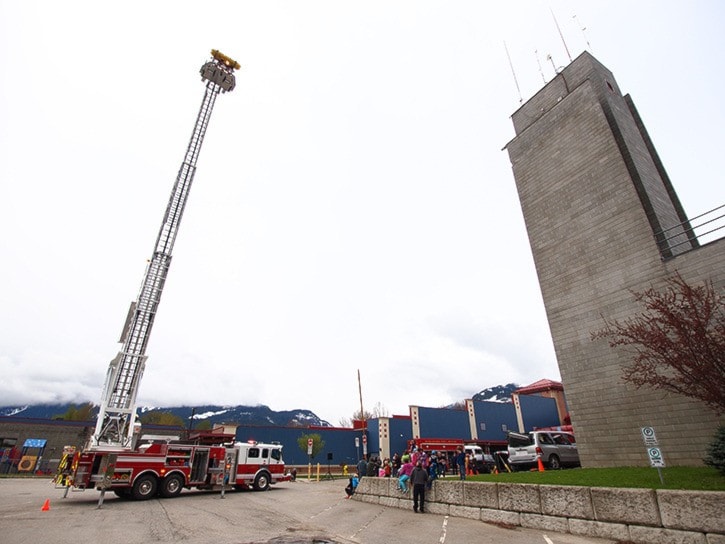Last year was a good year to be a firefighter.
Revelstoke firefighters received big pay hikes in 2013, the result of retroactive pay increases that raised their average remuneration to more than $120,000 last year (not including the fire chief).
All told, they made up five of the seven highest paid city employees in 2013, when all salaries, overtime, taxable benefits and expenses were factored in.
Municipalities are required by law to disclose the remuneration of all employees that earn more than $75,000, as well as those of mayor and council. The City of Revelstoke released the information in a news release on Thursday afternoon, after it was requested by the Times Review.
Mayor David Raven earned $28,000 last year and claimed $3,318 in expenses. Councillors earned $14,000 each. In terms of expenses, Christopher Johnston claimed $1,724, Tony Scarcella claimed $1,278, Phil Welock claimed $854, Linda Nixon claimed $276, Gary Starling claimed $54 and Steve Bender did not claim any expenses.
A firefighter was the highest paid city employee, earning $146,472 in 2013. After that was Tim Palmer, the city’s chief administrative officer, who earned $143,253.
Mike Thomas, the director of engineering and development services, earned $124,768 last year. His responsibilities were increased to include responsibility over both engineering and development last year after former planning director John Guenther resigned.
The next four on the list were all firefighters earning between $108,183 and $120,757.
Finance director Graham Inglis made $104,944 and fire chief Rob Girard earned $95,594, to round out the top 10 paid city employees.
Sixteen employees were also on last year’s list.
Because of turnover and changes in roles, it is difficult to make direct comparisons to 2012. As well, taxable benefits were included in 2013 and not in previous years.
Still, firefighters received big jumps in pay in 2013, a result of retroactive three per cent pay increases they received for both 2010 and 2011 that was paid out last year.
The retroactive wage hikes were worth $80,589 total — or almost $16,000 per firefighter, according to the city’s news release. They made up about 45 per cent of the total increase in pay to employees who earned more then $75,000.
Dan Hutchison, the president of the local firefighters union, said last year was an exceptional year for the department, with the retroactive pay combining with other factors to lead to abnormal pay packages. One firefighter went on long-term disability, forcing the others to cover his shifts.
“Our collective agreement, when you cover shifts, you’re on overtime,” he said. “It becomes a challenge for sure operationally when someone goes down sick.”
Another issue he raised was that the volunteer crew has gone through lots of turnover in recent years, making for an inexperienced crew that requires extra training and support.
“You feel very compelled to help with training and respond to the calls,” he said. “It puts more pressure on the career staff to respond, and when you respond you get paid overtime.”
Hutchison also noted that firefighters work 42 hour weeks, compared to 35 hours for city office staff and 40 hours for city outdoor workers.
Firefighters made up a significant portion of the highest paid employees in all municipalities for which the Times Review found information. Mayor David Raven said the pay of firefighters was a national concern.
“It’s not just a municipal or provincial issue, it’s a national issue, in that fire department unions have crept up their remunerations over the years, so they’re well paid for the job that they do,” he said.
Firefighters received three per cent annual raises in their latest contract, while other city employees, who are part of the Canadian Union of Public Employees, only received 1.5 per cent raises.
The city is preparing for the next round of negotiations, which are expected to begin later this year. “There have been substantial settlements in other parts of the province,” said Raven, adding he didn’t know what to expect this year. “We have yet to open up those discussions, so we don’t know what their expectation are.”
There are possible cost savings, such as moving to a paid on-call model, or away from 24-hour shifts, but those also pose challenges, and the savings are questionable.
“There was a marginal savings to transition to paid on-call, but many challenges with it that really made it unnecessary to move to that,” said Raven. “To move the union off the 24 hours onto a different shift will require bargaining. Whether or not the 24 hour (shift) has an impact on the cost of providing fire service was debatable.”
